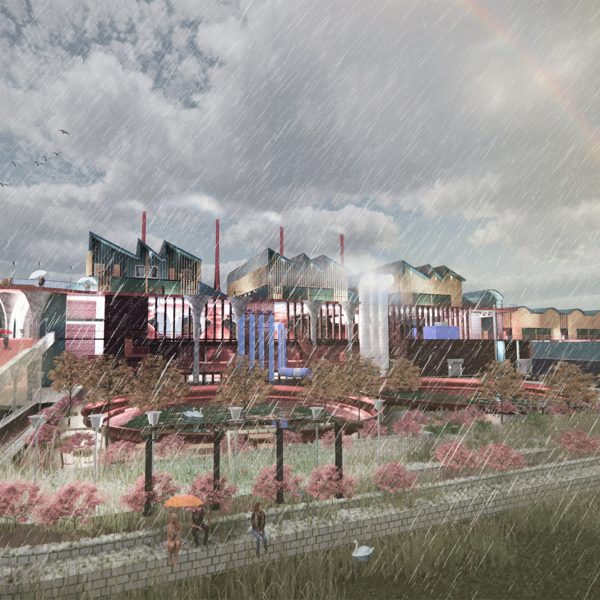Dezeen School Shows: the restoration of an old supermarket into a community space with a focus on sustainability is featured in Dezeen’s latest school show by students at Cardiff University.
Also included is a co-housing complex that accomodates different generations of residents and a pier that emphasises biodiversity through its design.
Institution: Cardiff University
School: Welsh School of Architecture
Course: Master of Architecture
School statement:
“The Welsh School of Architecture (WSA), based in Cardiff, is a world-renowned institution for design and built environment studies.
Originally founded over a century ago, the WSA has a strong tradition of excellence in architectural education; our teaching and research embrace the diversity and transdisciplinary nature of architecture.
“We foster curious, creative, critical, ethical learners who can approach challenges with wide-ranging, flexible skills and knowledge.
“Our vision is to contribute to the making of built environments that enhance the well-being of current and future generations while caring for the planet.
“The Master in Architecture (MArch) is a two-year programme. Accredited by RIBA, ARB and LAM (Malaysia), the programme encourages students to forge a personal stance informed by critical, reflective, creative and interdisciplinary approaches to design.
“In the first year of the MArch — the year of education in practice — our students undertake academic and project work while based in paid employment in an architectural practice.
“The second year, by contrast, is spent entirely in the school. Here, students develop grounded but research-led study through a dissertation and design thesis, whilst also undertaking studies in the practice, management and economics of architecture.
“Through the design thesis, each student initially identifies a site and topic for exploration that is framed within the context of a thematic design unit.
They go on to use design as a vehicle for research and the development of imaginative architectural propositions.
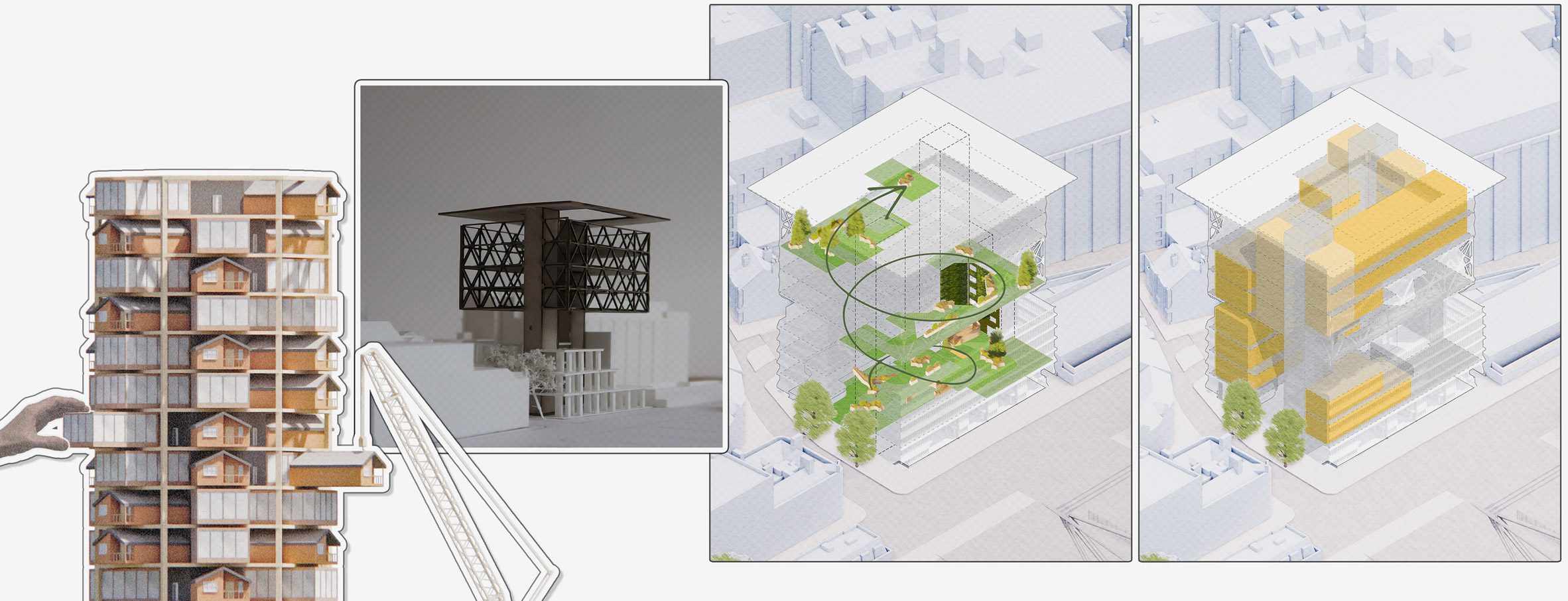
The Resilient Office (of the Sharing Economy) by Matt Gibson
“Empty corporate offices of the hybrid working era reflect the unsustainable vulnerability of the typology as attitudes towards work evolve.
“The Resilient Office explores a sustainable alternative to the perpetual cycle of construction, use and obsolescence of offices through a cross-programmed office typology.
“Embracing sharing economy principles, the scheme involves the adaptive reuse and vertical extension of a multistorey car park to provide a series of parks and a flexible combination of office and residential units.
“Allowing for a direct reaction to corporate expansion, or contraction, through acknowledging obsolescence, continuity of built environment and public amenities is instead offered as a corporate legacy.”
Student: Matt Gibson
Course: Master of Architecture
Email: matthew.gibson32[at]me.com
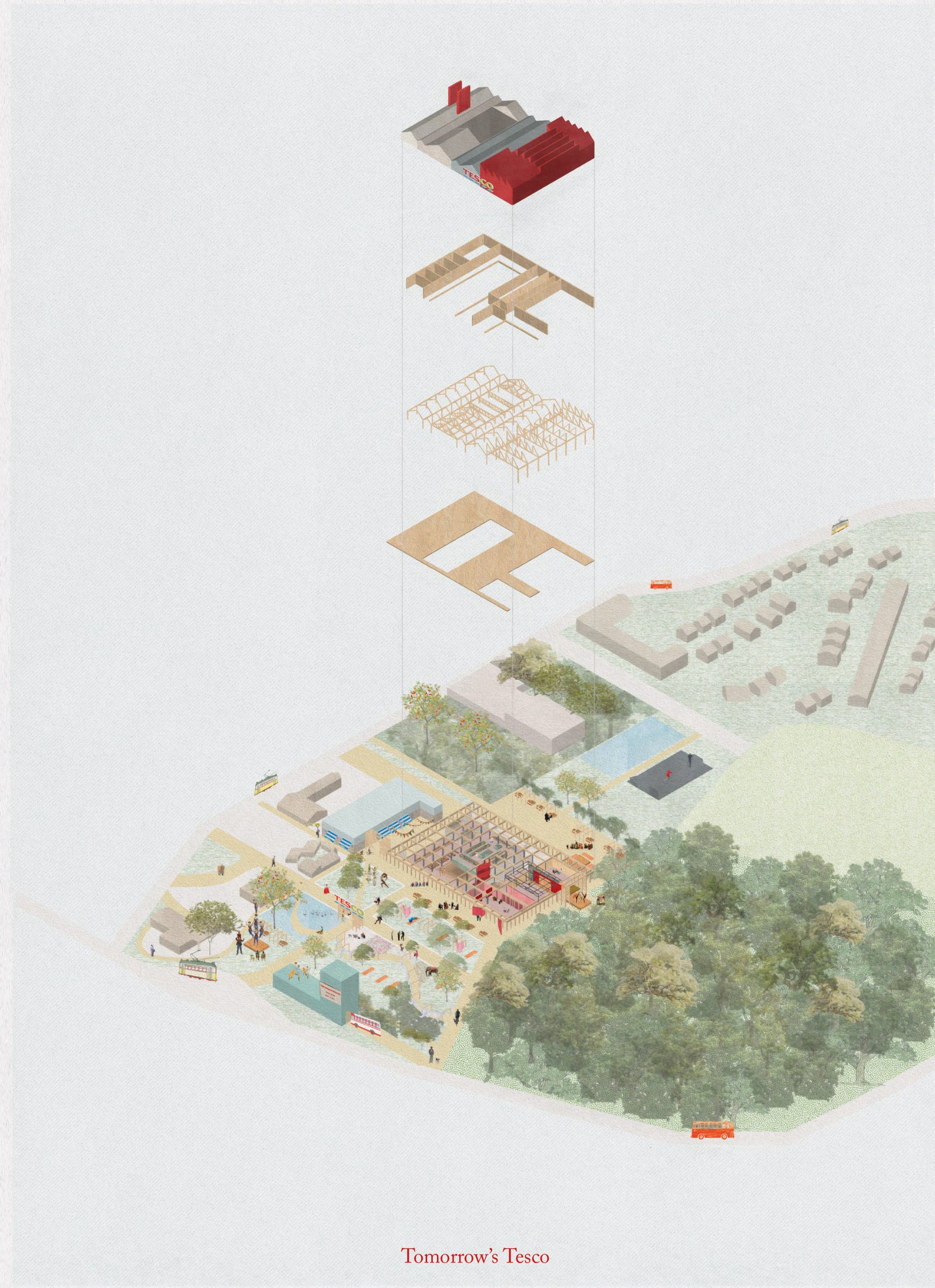
Tomorrow’s Tesco: Parking Spaces to Public Places by Charlotte Woodfield
“This thesis envisions a transformative future for Tesco’s superstore in St Mellons, Cardiff, emphasising sustainability and community engagement.
“Addressing the suburb’s car dependency and lack of community spaces, it aims to create a vibrant hub that integrates seamlessly into St Mellons.
“Initially, Tesco will support local farmers and integrate performance spaces, using proceeds to fund a transport interchange hub.
“Over time, the car park will transform into a dynamic public square, prioritising pedestrian routes and cultural activities, redefining the supermarket as a community and cultural centrepiece.”
Student: Charlotte Woodfield
Course: Master of Architecture
Email: charlottelwf[at]gmail.com
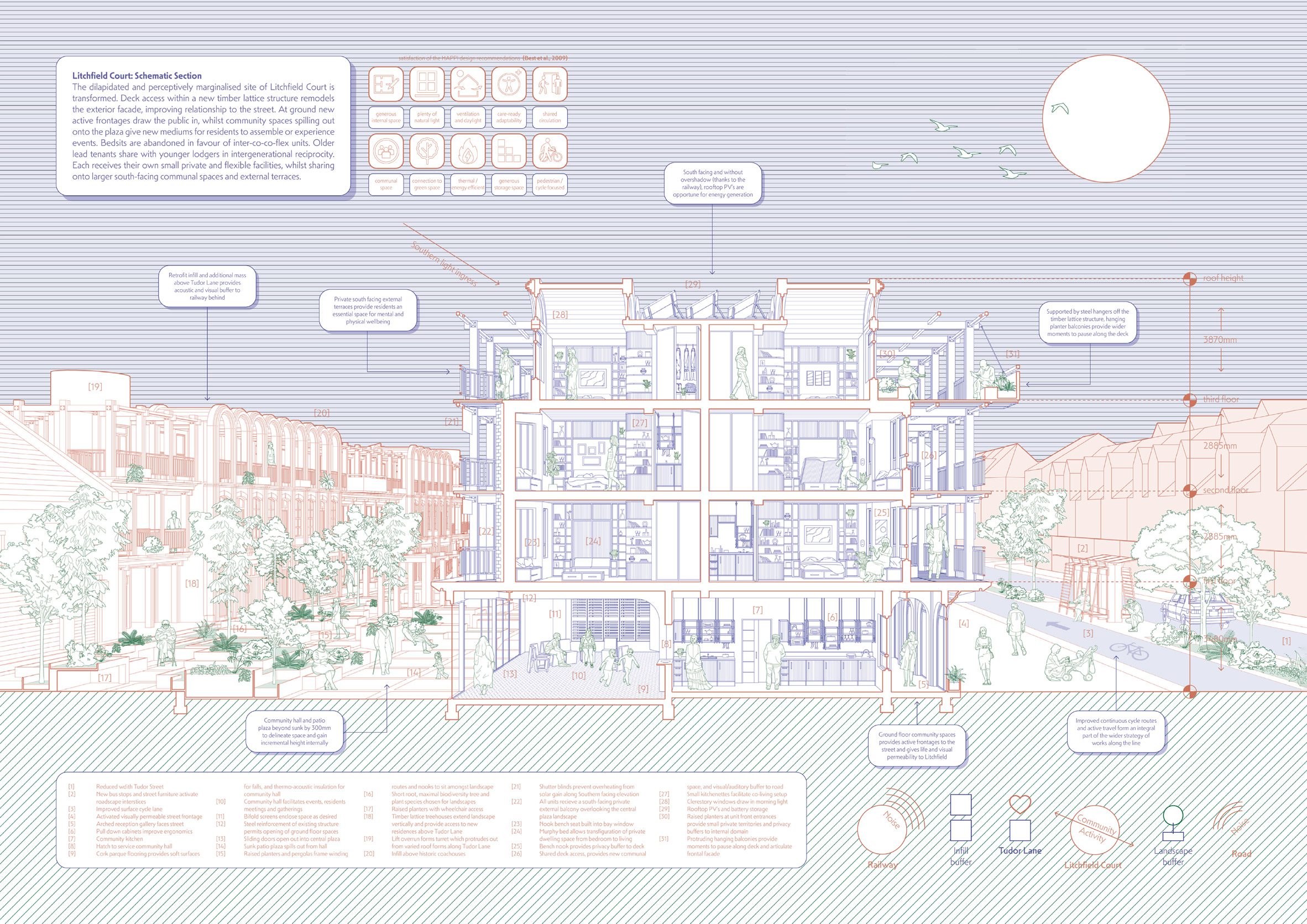
Investing the Margins by Chris Adams
“An invested margin presents a new social housing commons to facilitate intergenerational exchange – where young and old live and age together, no longer territorialised to the peripheries and no longer marginalised within interstices.
“Through a sustainable retrofit, infill and fabric-first approach, a perceptively dilapidated social-housing estate in Cardiff is transformed.
“The project acts as a rallying cry to reject the policies of weakening housing standards, displacement and territorialisation and instead argues for reinvestment in the margins, whereby community empowerment transforms marginalised spaces, marginalised people, into something which is more integral to the life and vitality of the city.”
Student: Chris Adams
Course: Master of Architecture
Email: chris.adams652[at]icloud.com
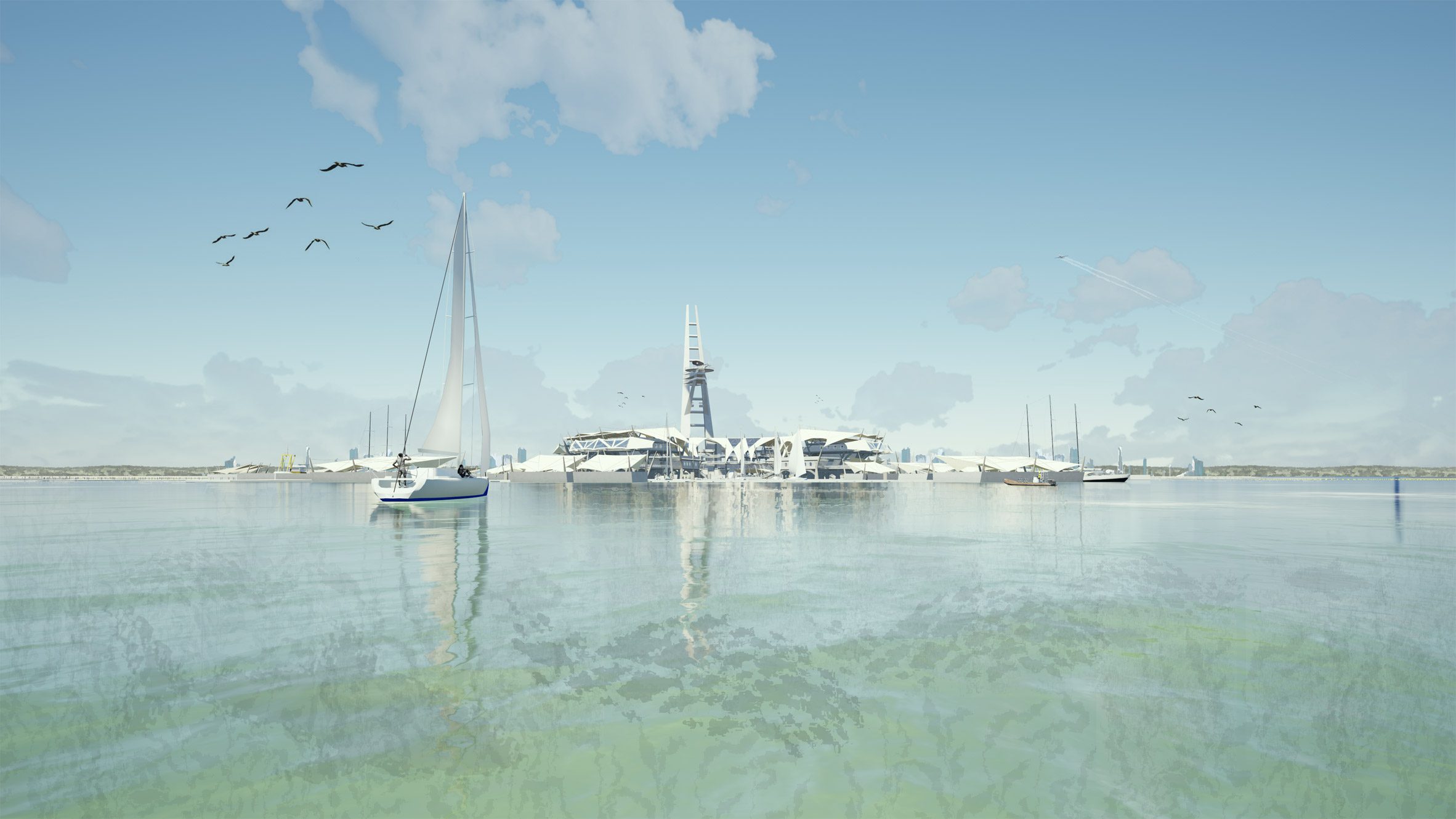
Whose Ocean Is It? Architecture for a sustainable marine environment by Barney Johnson
“Without a healthy ocean environment, a liveable world cannot exist.
“A design competition was launched to develop an architectural infrastructure that can address key challenges and catalyse the development of the 2030 Aquatic Transition Plan.
“The New South Pier development focuses on sustainable production through mariculture, boosting biodiversity through artificial reef seeding and engaging the public with cultural and leisure facilities.”
Student: Barney Johnson
Course: Master of Architecture
Email: b.johnson.architecture[at]outlook.com
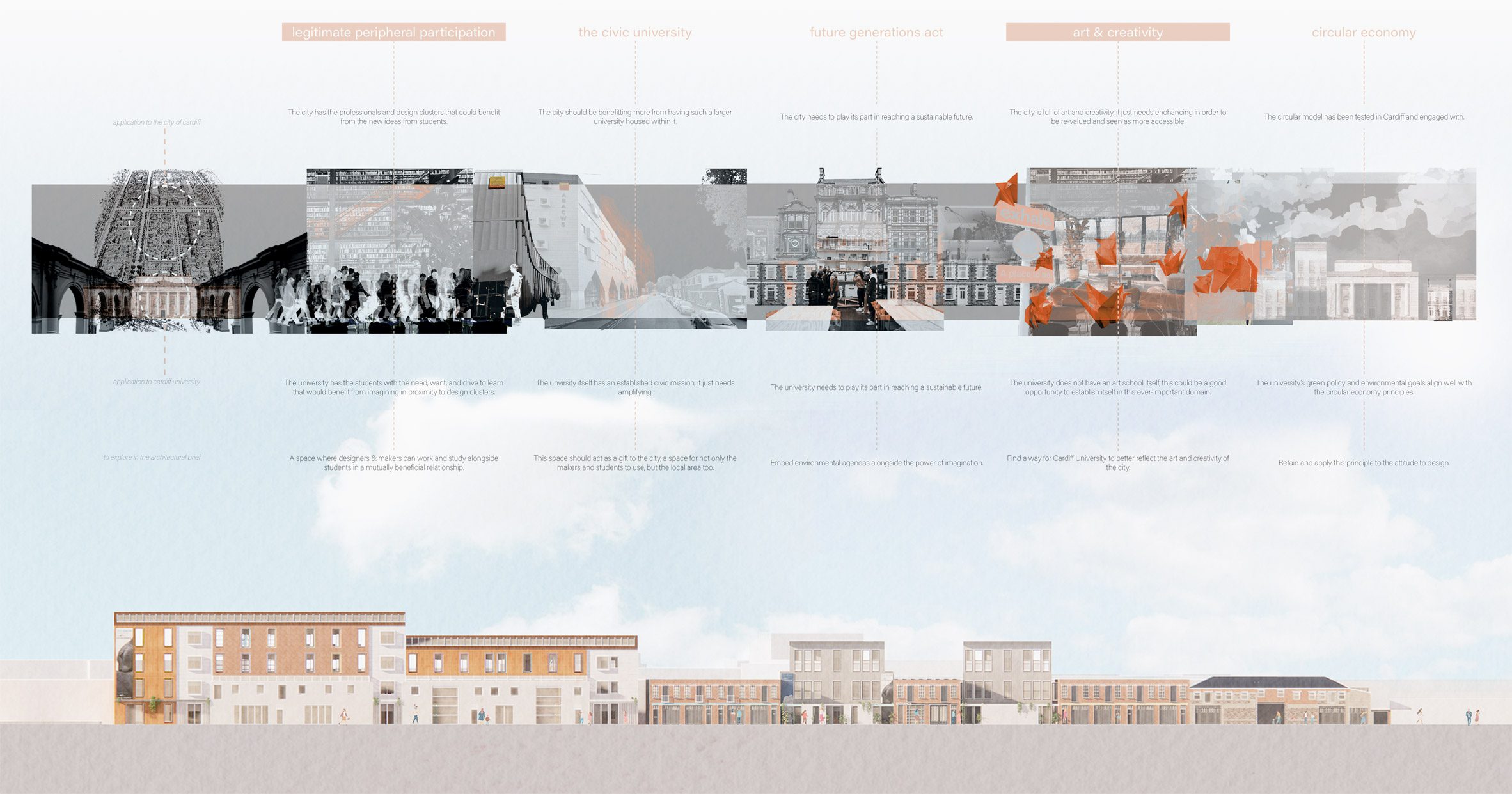
Higher Imagination by Anne-Marie Howick
“One of the biggest challenges for our current and future generations is the persistent, self-perpetuating issues that are causing irreparable damage to our environment and our people.
“Education and rigorous research are leading change and, arguably, so is our ability to imagine a different future, yet there is such disparity on how much value is given to each of these drivers of progress.
“Higher Imagination challenges the current educational system that is inherently and systematically devaluing imagination.
Instead it empowers students to value their future thinking through engaging their imaginations within local art communities – Cardiff’s homes of imagination.
Student: Anne-Marie Howick
Course: Master of Architecture
Email: howick46[at]gmail.com

The Memory Collective by Connor Bryan
The thesis explores whether a building can tell its own stories – a position defined through the usage of playwriting as a new form of architectural interrogation.
“The project expands on this expressionism and looks to re-capture the role of storytelling in society against the growing digital realm we experience today.
“Architecturally, the proposal explores multiple avenues surrounding how a building can tell its own story, amongst the wider programmatic offerings of a memory hall, classroom and intimate conversation spaces.
“The result is a building’s story that is exposed to its audience, a new facilitator of storytelling and social cohesion in Pontypridd.”
Student: Connor Bryan
Course: Master of Architecture
Email: hello[at]connorbryan.co.uk
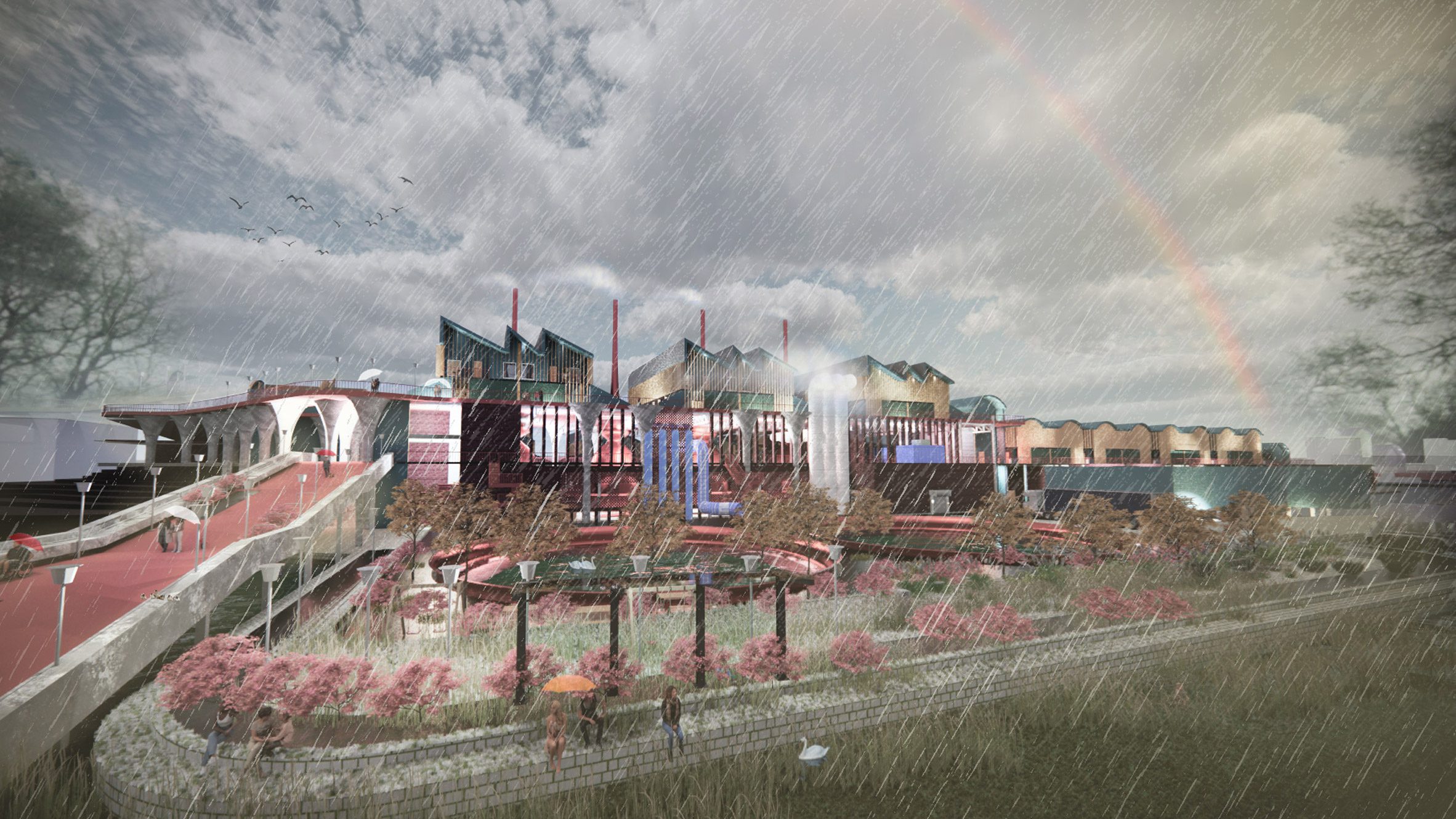
Back To The Marsh: The Marsh Estate by Prity Chatterjee
“Back to the Marsh harnesses ecological systems for the revitalisation of St Philip’s Marsh.
“By integrating natural water purification techniques, sustainable energy generation and flood resilience strategies and repurposed water resources for agriculture and fuel production, the project positions ecology as the central narrative for rejuvenating the marsh.
It prioritises advocating for wastewater clean up, local clean energy, green corridors, eco-education and green finance.
“A forward-thinking 20-year design vision, situating new housing amongst a sustainable, flood-resilient and ecologically driven future for Bristol’s St Philip’s Marsh.”
Student: Prity Chatterjee
Course: Master of Architecture
Email: prity.chatter[at]@gmail.com
Partnership content
This school show is a partnership between Dezeen and Cardiff University. Find out more about Dezeen partnership content here.

